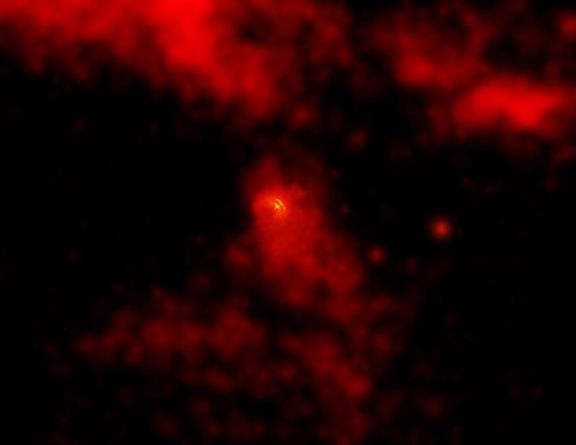Explanation: The Vela pulsar was born 10,000 years ago at the center of a supernova -- an exploding star. In this Chandra Observatory x-ray image, the pulsar still produces a glowing nebula at the heart of the expanding cloud of stellar debris. The pulsar itself is a neutron star, formed as the stellar core was compacted to nuclear densities. With a strong magnetic field, approximately the mass of the Sun, and a diameter of about 20 kilimeters, the Vela pulsar rotates 11 times a second. The sharp Chandra image aids astronomers in understanding such extreme systems as efficient generators of high voltages which drive structured winds of electrically charged particles. An x-ray bright nebula is created as the pulsar winds slam into the surrounding material. This view spans about 6 light-years across the central region of the much larger Vela supernova remnant.
1999 2000 2001 2002 2003 2004 2005 2006 2007 2008 2009 2010 2011 2012 2013 2014 2015 2016 2017 2018 2019 2020 2021 2022 2023 2024 2025 |
Yanvar' Fevral' Mart Aprel' Mai Iyun' Iyul' Avgust Sentyabr' Oktyabr' Noyabr' Dekabr' |
NASA Web Site Statements, Warnings, and Disclaimers
NASA Official: Jay Norris. Specific rights apply.
A service of: LHEA at NASA / GSFC
& Michigan Tech. U.
|
Publikacii s klyuchevymi slovami:
ostatok Sverhnovoi - supernova remnant - Vela - Pul'sar - rentgenovskie luchi - tumannost' Vela - pulsar
Publikacii so slovami: ostatok Sverhnovoi - supernova remnant - Vela - Pul'sar - rentgenovskie luchi - tumannost' Vela - pulsar | |
Sm. takzhe:
Vse publikacii na tu zhe temu >> | |
